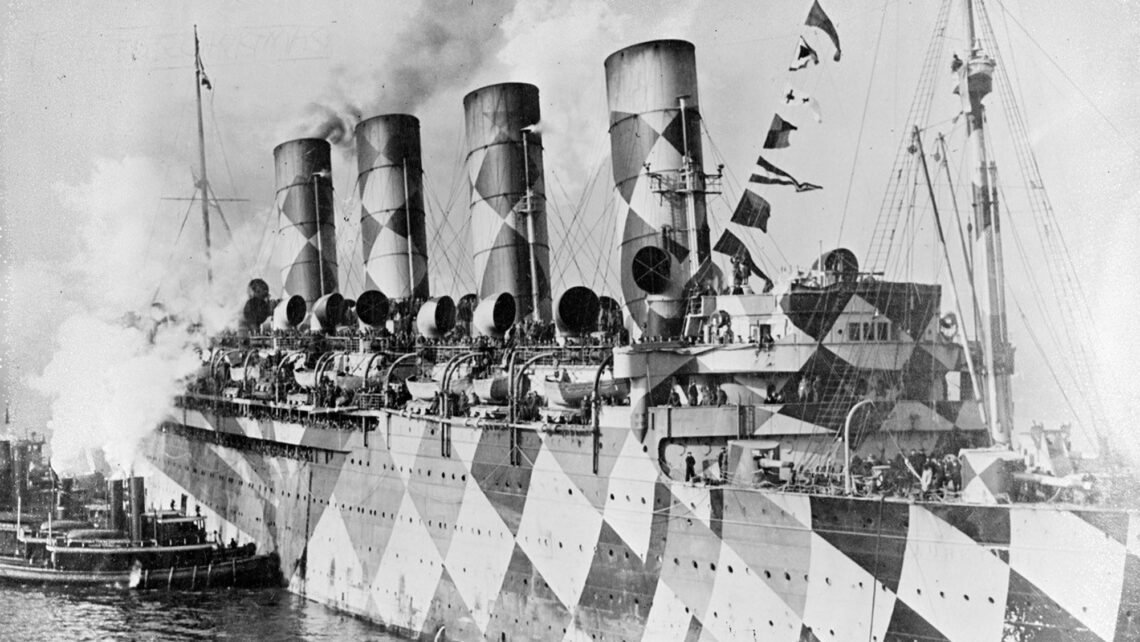During World War I, Allied navies started implementing shocking, cubist-inspired “dazzle” paint jobs on ships. The now-iconic geometric designs were intended to throw off the visual perception of German U-boats crews and prevent them from accurately targeting ships with torpedoes. Conventional wisdom claims the bizarre camouflage pattern worked and helped turn the tide of Great War naval battles. But new research reevaluating one of the only rigorous studies testing that hypothesis suggests those conclusions were probably overblown. Researchers now claim another phenomena known as the “horizon effect” may have actually done more to throw off submarine gunners than the wacky aesthetic.
The study, published last week by Aston University researchers in the journal i-Perception, recreated one of the few solid quantitative studies on dazzle ship effectiveness, updating the methods to meet modern scientific standards. The revised findings claim the original study “substantially overestimated the effectiveness of dazzle camouflage.” While the modernist designs may have played some role in distorting perceptions of a ship’s movement and direction, the new study found similar effects also occurred with ships painted in standard, single-color palettes. According to the researchers, U-boat gunners viewing ships from a distance likely fell for an optical illusion that made the vessels appear as if they were traveling along the horizon. That illusion likely occurred whether the ships were “dazzled” or not.
“These reappraised findings resolve an apparent conflict with the second quantitative experiment on dazzle ships conducted over a century later using computer displays online” researchers write.
Dazzle: A different kind of ‘camouflage’
The dazzle paint scheme originated around 1917 as a direct response to unyielding German U-boat attacks. German ships famously adopted an “unrestricted submarine war” policy at the start of…
Read the full article here

